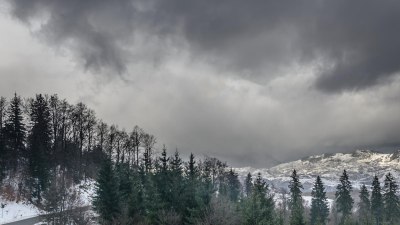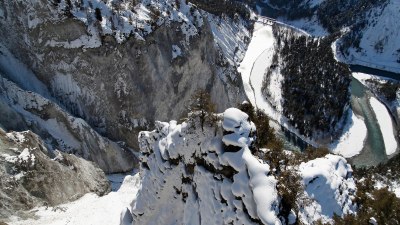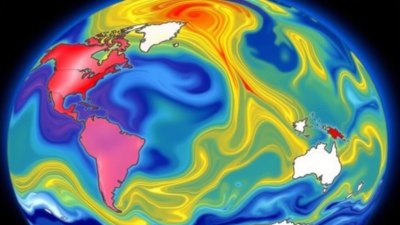Why Training in Extreme Weather Makes You Feel Like a Movie Hero (but Not in a Good Way)
Explore the impact of extreme weather training on physical and mental endurance, comparing real-life challenges to movie hero sequences.

When you think of a movie hero, you often envision someone who thrives in the face of adversity, overcoming obstacles that would deter even the bravest. However, when it comes to training in extreme weather, the experience can be less than glamorous and more akin to a test of survival. In this article, we will delve into the psychological and physical implications of extreme weather training, exploring why it can make you feel like a hero—even though the reality may be quite stark.
Hero’s Journey
A hero's journey often showcases individuals battling harsh conditions, whether it’s freezing temperatures, scorching heat, or torrential rain. These cinematic moments captivate audiences and inspire awe for the characters' resilience. When engaging in extreme weather training, one could easily fall into the same trap of romanticizing the struggle. However, the reality of training in such conditions frequently lacks the glamour portrayed in films. Instead of feeling invincible, many participants may face physical strain, mental challenges, and safety concerns that remind us of our limitations.
The Psychological Impact of Extreme Weather Training
Training in extreme conditions can lead to a range of psychological reactions. Upon stepping outside into frigid air or oppressive heat, the initial thrill can quickly fade into discomfort or even despair. Participants often have to grapple with their physical responses, which may include increased heart rate, heightened anxiety, or feelings of inadequacy. As they push through limitations akin to movie heroes, these individuals tap into their inner strength, yet the experience also evokes self-doubt. Rather than emerging heroic, they may feel more like ordinary people wrestling with their vulnerabilities.
The Body’s Response to Extreme Conditions
Extreme weather places an immense burden on the body. Training in such conditions can activate both the sympathetic nervous system and the fight or flight response. This biological reaction can lead to acute stress, causing adrenaline and cortisol levels to spike. For instance, exercising in sweltering heat not only raises body temperature but also leads to a higher risk of dehydration and heat fatigue, making training feel more punishing than heroic. Similarly, braving frigid temperatures can result in hypothermia and frostbite, pushing the body to its limits in a much less glamorous way than depicted in films.
Training for Real-Life Scenarios
While training in extreme weather can offer a unique perspective on endurance and resilience, it is essential to recognize the reality of such experiences. In emergency services, military training, and specialized environments, practitioners may require this intense preparation to face potential life-threatening situations. Here, the training genuinely aims to transform participants into heroes capable of handling crises. However, this doesn’t negate the extreme physical and mental toll the training takes. Instead of leaving participants feeling victorious, the outcomes may range from sheer exhaustion to unexpected injuries, far removed from the celebratory heroics displayed on screen.
A Cautionary Tale: The Betrayal of Heroism
The concept of heroism often comes with the expectation of resilience and strength. However, the reality of extreme weather training can transform that narrative into one filled with struggle and self-doubt. Participants may feel betrayed by their bodies when facing the unexpected—muscle cramps, fatigue, and hypothermic chills—not the triumphant strength they anticipated. This betrayal can be disheartening, as the heroic images that populate media often neglect the reality of struggle behind the scenes. The result is a disconnect between perception and reality; while you might feel like you’re enduring a Hollywood blockbuster, the truth is often far less glamorous.
Embracing the Reality of Training
Understanding the psychological and physical toll of extreme weather training allows individuals to embrace their experiences authentically. Instead of striving for the unattainable image of a flawless hero, individuals can find strength in vulnerability. By recognizing that feeling exhausted, uncomfortable, or even defeated is a part of growth, they can appreciate the process. Embracing this reality enables participants to celebrate their efforts instead of adhering to unrealistic expectations, effectively redefining what it means to be a hero.
Lessons from the Extremes
Extreme weather training pushes participants to recognize their limits and strengths. The key takeaway is adaptation; just as heroes adapt to overcome their challenges, training in extreme conditions fosters adaptability in the face of adversity. By embracing discomfort and pushing through it, individuals can cultivate resilience and a deeper appreciation for their capabilities. While the immediate experience may feel overwhelming, it contributes to personal growth and fortifies the spirit.
Finding Community in Shared Experiences
A significant aspect of extreme weather training is the sense of camaraderie that develops among participants. Facing challenges together fosters a unique bond that can help alleviate some struggles. Much like movie heroes often band together to confront villainous forces, those training in extreme conditions can support one another. The shared experience of discomfort and challenge breeds community and cultivates understanding as participants lean on each other for motivation. This camaraderie can lead to long-lasting friendships and create a network of resilience.
Revisiting the Hero’s Journey
As we re-evaluate our perception of heroism, it is crucial to appreciate that adventure and success lie not only in triumph but in the process of overcoming adversity. The transformations spurred by training in extreme conditions can unveil new layers of strength, resilience, and insight. Although participants may not always emerge looking like traditional heroes, the experience may grant them profound inner strength that can inspire real-life courage and perseverance.
Redefining Heroism
The lessons gleaned from extreme weather training help redefine the meaning of heroism. While the allure of the cinematic hero's tale can paint an inspiring picture, it is vital to realize that true strength is found in vulnerability and the willingness to confront challenges head-on. Through perseverance in the face of discomfort, individuals uncover personal growth and resilience that create real-life heroes. By embracing the journey—complete with its struggles and community support—one can emerge empowered and ready to tackle future challenges with a true hero's spirit.











